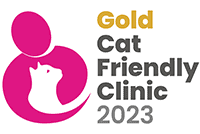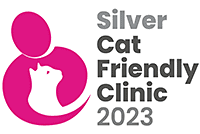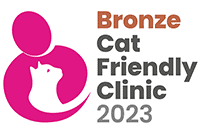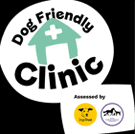Your Pet
Puppy Essentials
Please see below information on the common practical questions that new puppy owners often ask us.
-
Diet
When you first take a puppy home feed it on the same food it has been used to. A sudden change of diet combined with the stress of adapting to a new home can cause stomach upsets and diarrhoea. If you want to change the diet, do so gradually by mixing it with the puppy’s usual food. Puppies have small stomachs and have to be fed little and often, like babies. It can be very difficult to put together a homemade diet which provides all the nutrients required by growing puppies – it is a great deal easier to feed a good quality commercial puppy food. There are foods which have been specially formulated for puppies because they have different nutritional needs to the fully grown dog. Village Vet will advise you on the best, complete diet for your puppy.
-
What does my puppy need?
- Two bowls big enough for a fully grown dog, ceramic are good as they do not slip.
- Temporary puppy collar and lead (they will grow out of it), soft and light but strong enough to hold the puppy. The collar should be a full collar, not a choke chain or a half choke. A 6ft lead is eventually recommended for training. The best are soft webbed leads, not chains which are heavy and hurt your hands.
- Kong is a perfect indestructible toy to throw or stuff with food. This is a very good distraction when puppy is left alone, as will occupy the first 30 mins when they are most active.
- Bed: Beware!! Your puppy will probably chew the bed so do not spend a fortune until he has grown out of the chewing phase. Items impregnated with your scent are a good idea but the puppy will not be able to decipher between the holey old jumper you gave him and your favourite cashmere sweater so be careful. This especially applies to old slippers!
- Food: We recommend a complete puppy food. These are available in our clinics where our nurses can also discuss a suitable feeding plan
- Identity disc: It is a legal requirement for your dog to wear an identity disc bearing the owner’s name, address and contact phone number and to have an dentityi microchip.
- Brush / comb: The type of brush or comb will depend on the breed of dog. But even short hair dogs benefit from a daily groom. It is a perfect opportunity to build the bond between owner and dog and it stimulates circulation in the skin. We recommend Zoom Groom brushes.
-
Housetraining
Basic guidelines to avoid those little accidents!
- Luckily it is natural instinct that a dog will not soil its bed area, unless it has been raised in appalling circumstances. However, puppies are not aware that the rest of the house should also be treated as a huge bed which is the ultimate aim of housetraining.
- The optimal way to achieve successful housetraining is by simple clear instructions to minimise the risk of mistakes. Once a mistake has been made a habit may quickly develop and is harder to extinguish. So prevention is definitely better than cure!
- As a rough guideline an eight week old puppy will need to urinate every 75 mins, a 12 week old every 90 mins and an 18 week old every 2 hours. Puppies also tend to need to wee within about 30 seconds from waking and poo a couple of minutes later. The puppy’s behaviour will also provide some vital cues such as sniffing, circling, whining, disinterest in play or food just before it eliminates. So using these guidelines and studying the puppy’s behaviour we should be able to gauge when the puppy needs to be taken outside.
The 3 Main Methods of Housetraining
1. 121 training.
To prevent mistakes you will need to watch your puppy constantly! Never leave unsupervised when awake and try not punish mistakes. As soon as he wakes, or exhibits any of the aforementioned behaviours, take him straight outside. Stay with him outside. When he eliminates reward him with an extra special treat (e.g. 3 liver treats) then go for a walk or play time. The action of eliminating is actually self-rewarding so it is the fact that he has eliminated in the right place that you are rewarding. The reward must be immediate to establish the association.If your puppy does have an accident in the house ensure it is cleaned thoroughly. Dogs have much more sensitive noses than we do and use of an enzymatic cleaner will remove any residual traces of the smell; significantly reducing the chance that the puppy will think this is a toilet!This method is only usually successful if you have nothing else to do all day except watch and play with the puppy or if you have a particularly well-adjusted pup. If you have children getting them involved is a great idea, especially if you can set a timer to ensure the pup is taken outregularly.
2. Training Pads.Confine the pup to a room and cover the floor with training pads or newspaper. Gradually decrease the area covered by the pads until left with just 1. When the pup is reliably eliminating on the pad take a soiled pad to the substrate you eventually want the pup to use e.g. grass or concrete. The smell will soak into the new substrate and act as an odour cue for the pup. Remember to reward the pup every time it uses the new substrate. When he is eliminating reliably in the correct place the pads can be removed. This method involves training the puppy twice. There is also a danger that the smell will impregnate the underlying substrate in the house e.g. lino, carpet, which will act as a future cue for the pup.
3. The Puppy Den.
This method involves organising a confined area (a corner of a room, an old playpen or a collapsible dog kennel). Inside your puppy will need a bed, bowls, toys and a litter tray. Whenever the pup cannot be watched vigilantly he needs to be placed in the den. The best way to ask the pup to go inside is to place his favourite toy or food inside the den with the puppy watching and shut the door with him on the outside. It will be the most desirable place in the world to the pup, so after about 30 secs let him go inside. Always make sure he has a bit of food, or a treat, water, and a toy to play with.
The idea behind the litter tray is to provide an area for the puppy to eliminate in case you are unavailable to let him out every hour. In the litter tray should be placed a sample of the substrate you eventually wish him to use, e.g. concrete or grass. Ideally the pup should be taken outside every hour or when he wakes and stay with him as described before. If he does not eliminate outside it is a good idea to place him back in the den for 30 mins then run him back outside and wait until he goes. This will prevent him from coming in from the garden and peeing on your floor!
THE DEN IS NOT A PUNISHMENT!
It should never be used if the puppy has been naughty as a form of isolation. The pup will probably only need to use the den for a couple of weeks until he has learnt the art of where to wee and poo. Often the puppies begin to regard it as a safe haven from noisy adults and relentless children, so it should be perceived as a positive area rather than a prison. It is also ideal for use at night to avoid the problem of each time the pup barks he gets your attention, even at 3am! You know he is safe and has everything he needs so the barking can be ignored. The pup should also not be left in the den for extensive periods of time.Housetraining can be a stressful time at the start of your relationship with your new puppy. These months are great fun and should be enjoyed by all. Continually clearing up puddles and piles can so easily be avoided.
Play Biting – How to Control It
Puppies like to chew but they must learn early on that human hands, skin and clothes are off limits. When a puppy is playing with his littermates whenever he bites another puppy too hard the pup will yelp, stop playing and move away. From this behaviour the puppy learns to inhibit his bite. By mimicking this behaviour we can elicit a similar response in the puppy. Play should be resumed within about a minute so the pup is rewarded for stopping the unwanted behaviour.Unfortunately, some puppies are relentless biters and need more encouragement to stop. If your puppy bites, stops, then immediately starts again try leaving the room for 30 secs then return with a toy to chew and resume playing. The length of isolation can be increased to a couple of minutes if necessary. With these puppies it is advisable to avoid rough and tumble games.Your puppy should have learnt by 20 weeks of age that it is unacceptable to place his teeth on human flesh. Some pups also like to bite ankles and hang off clothes. An ankle biter may be due to this being the only real part of a person that he sees on a daily basis. Try getting down to his level a bit more often. With a puppy that likes clothes, stop this behaviour right from the start and give him an alternative to chew. If this is a particular trait of your pup avoid giving him old clothes in his bed to snuggle in to.Avoid any punishment e.g. shouting, smacking – as this may cause an aggressive response from the puppy, or any games which will increase the likelihood of the puppy biting! A pup cannot possibly know that in certain circumstances he can bite you but must never bite the kids! Be persistent: play biting may stop but start creeping back if not continually reinforced.
-
Socialising
With Other Animals and People
The most important period for your puppy to meet lots of people and other animals, especially other dogs, is between 3 and 12 weeks of age. However, the process begins at birth and continues throughout your dog’s entire life. The breeder should begin this process by allowing men, women and children to visit the pups regularly. A pup raised by a single lady who has never met a man until he is 14 weeks old will be naturally wary of men and more likely to develop a fear reaction. Once puppy is brought home continue the process by inviting round all your friends and their children. Allow them to pick puppy up, play with him and give him treats. Your puppy should also continue meeting other dogs. Although there is a slight risk until he has had his second vaccination, at 10 weeks of age, allowing him to mix with vaccinated dogs in your garden will reduce the chance that your pup will develop antisocial behaviours towards other dogs. From 11 weeks he can start going out and mixing with lots of other dogs. Try not to be too protective and allow him to interact with dogs in the park where he will probably learn a few lessons in dog etiquette. Our Puppy parties are a great way for your puppy to meet new friends
Introducing Collar and Lead
Introduce the puppy to his collar and lead as soon as you get him home, well before he can start going outside. It will help to avoid the embarrassing puppy antics in public! At home, put the collar on the pup, give him a treat and take it straight off. Repeat over the next few days so puppy learns to associate the collar with nice things. When he is used to the collar attach the lead and let it drag on the floor. Eventually, pick the lead up but avoid putting any tension on the lead. Never leave the puppy unsupervised with a trailing lead. By the time the puppy can go for his first walk he will be so used to the collar and lead he can then concentrate on all the other things in the outside world.
Our practices
- London:
- Brackenbury
- Brook Green
- Chiswick
- Ealing
- Finchley (CLOSED)
- Garden Suburb
- Hampstead
- Highbury
- Highgate
- Kensal Green
- Maida Vale
- Palmers Green
- Primrose Hill
- Queen’s Park
- Southgate (TEMP CLOSED)
- St Helens
- St Johns Wood
- West Hampstead
- Winchmore Hill
- Hertfordshire:
- Village Vet Cattery
- Berkhamsted
- Potters Bar
- St Albans (Caytons)
- Cambridge:
- Cottenham
- Longstanton
- Milton
- Royston
- Whittlesford







